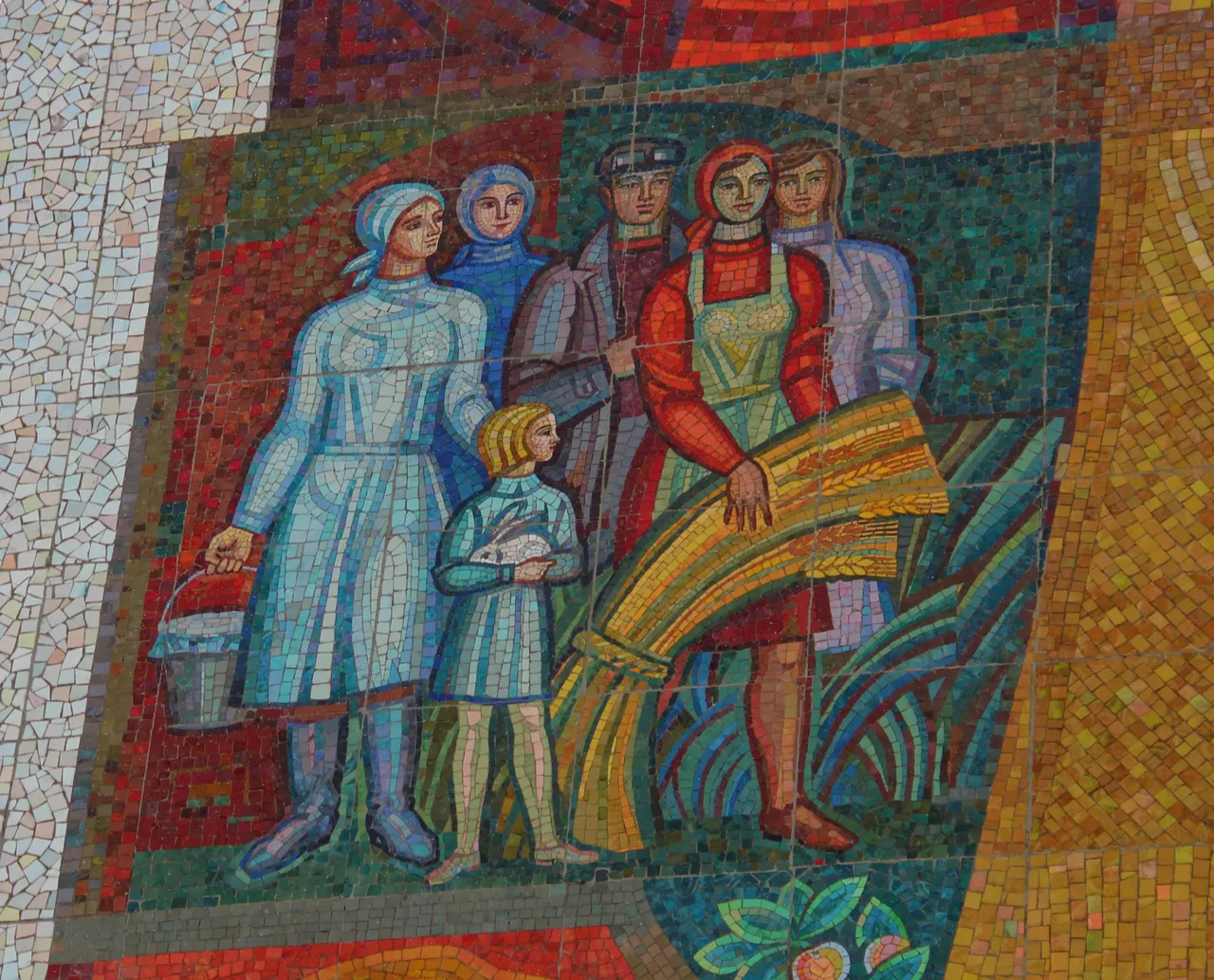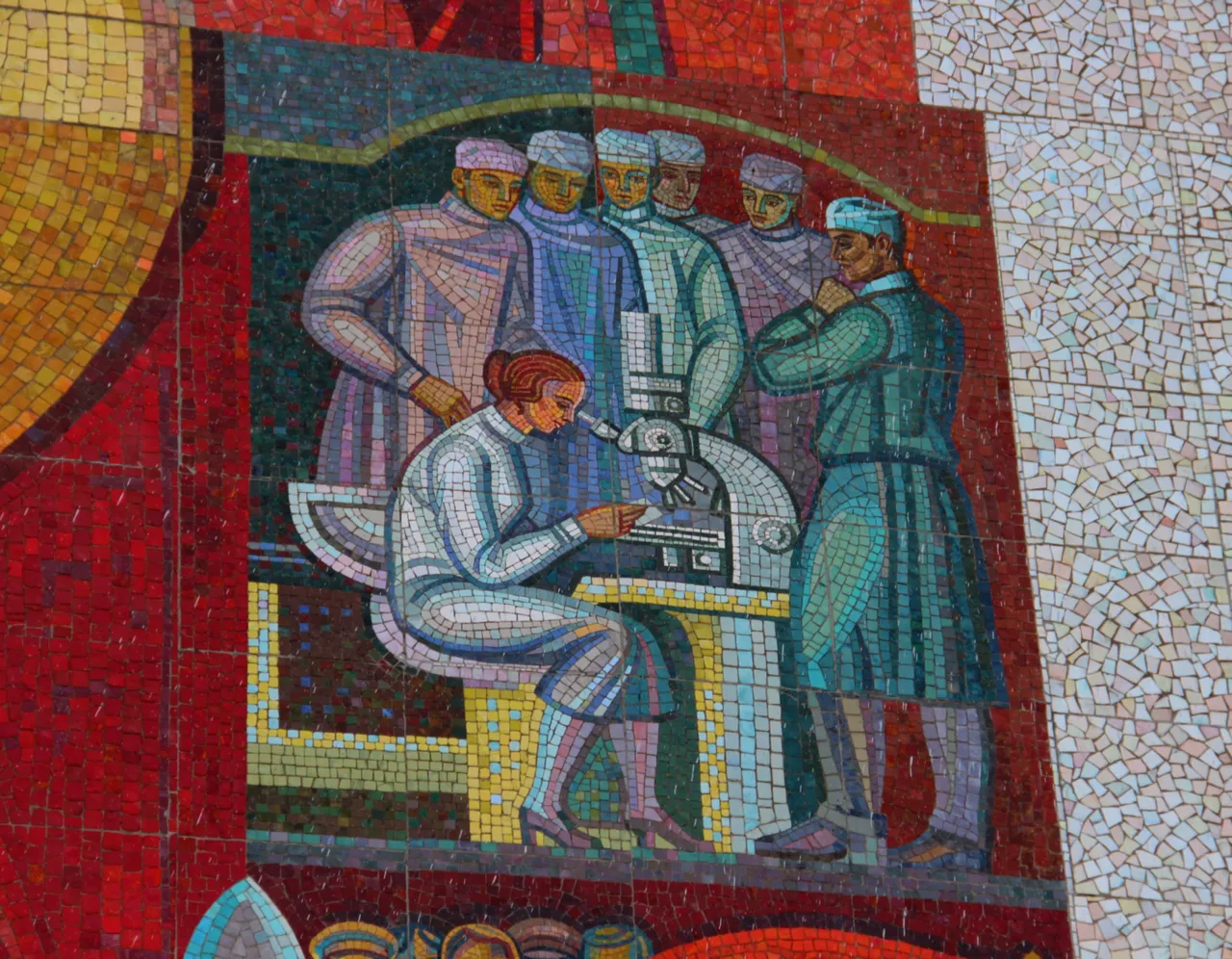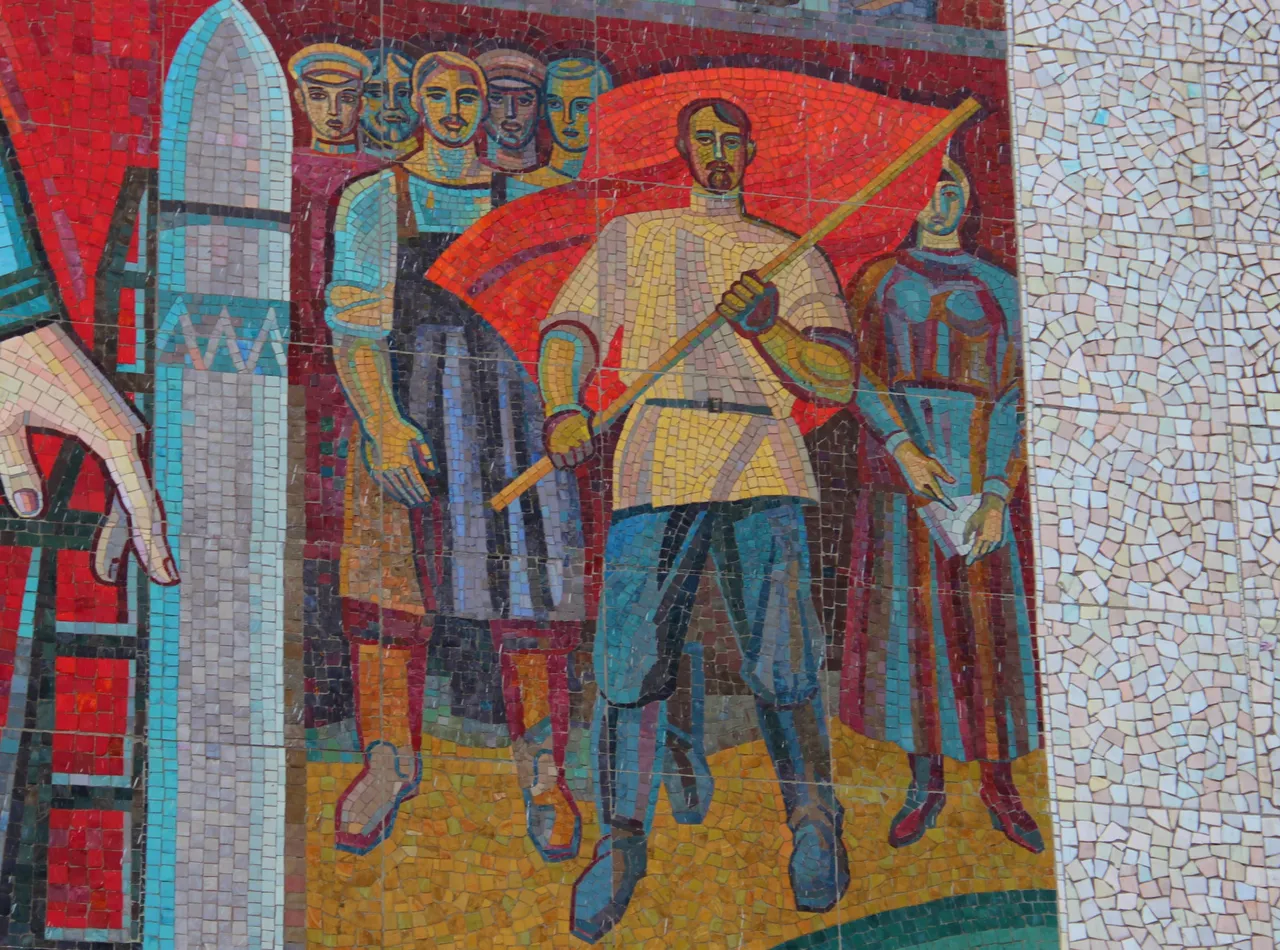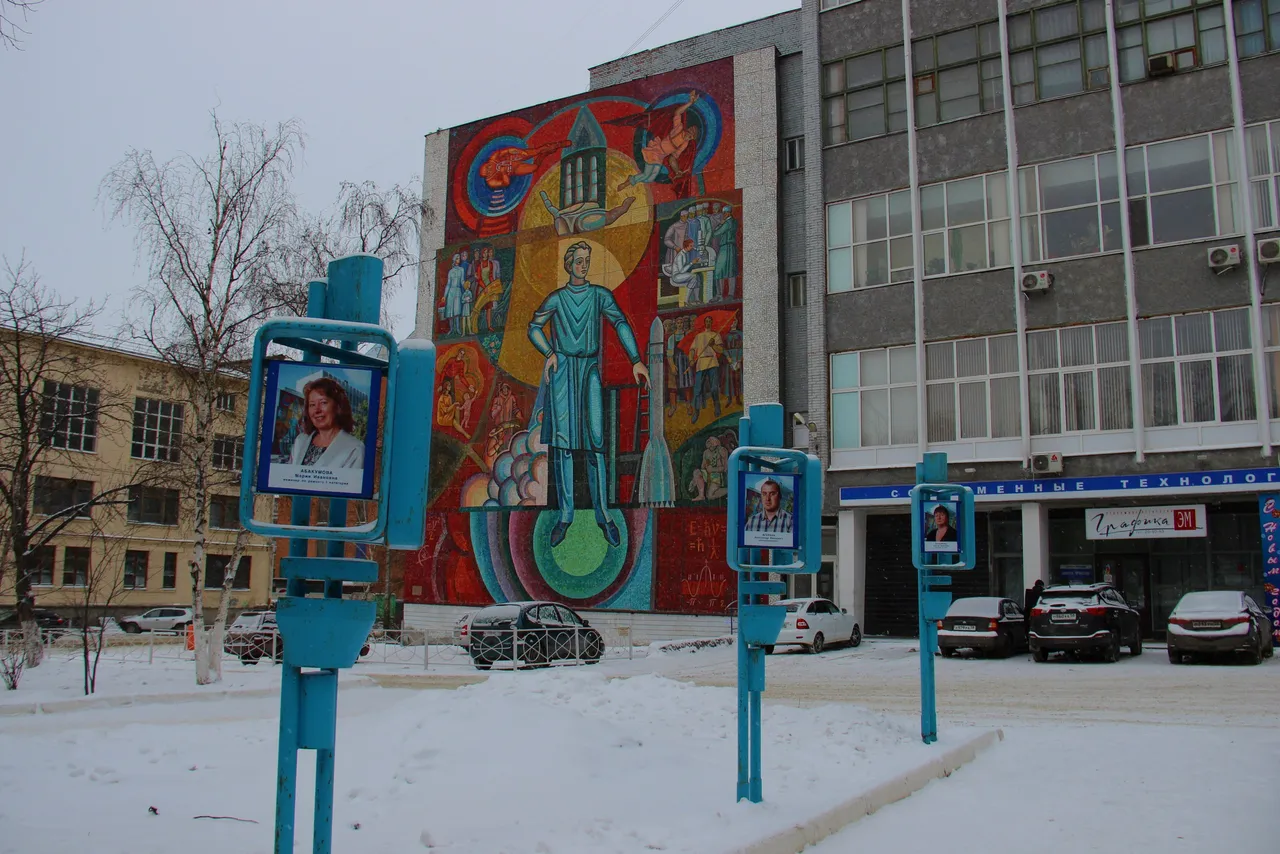
At the end of the last century in the Soviet Union it was popular to decorate buildings with mosaic panels. The massive appearance of mosaics on houses is most likely due to the large volume of mass housing construction. Mosaic panels brought variety to the monotony of residential areas. Also decorated factory buildings and office buildings.
This mosaic is located in Penza, on one of the buildings of the plant "Electromechanics", called - "Glory to Soviet science"
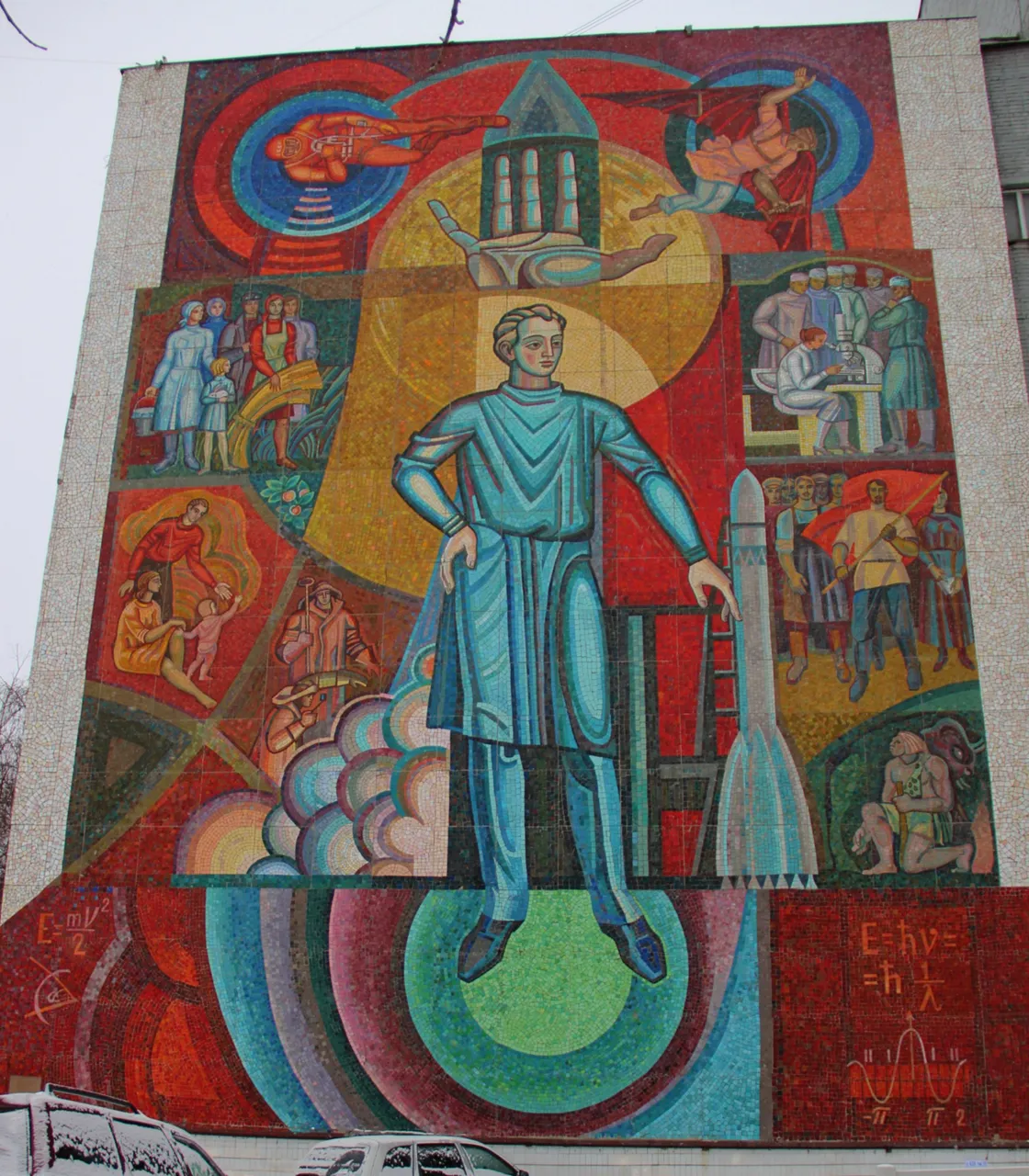
Plots of mosaics mainly demonstrated: industrial production characteristic of the city / region, revolution and war, friendship of peoples, successes of the national economy and science. The meaning of the paintings was usually simple - glory to the heroes of the past, the joyful work of the present, the expectation of a bright future.
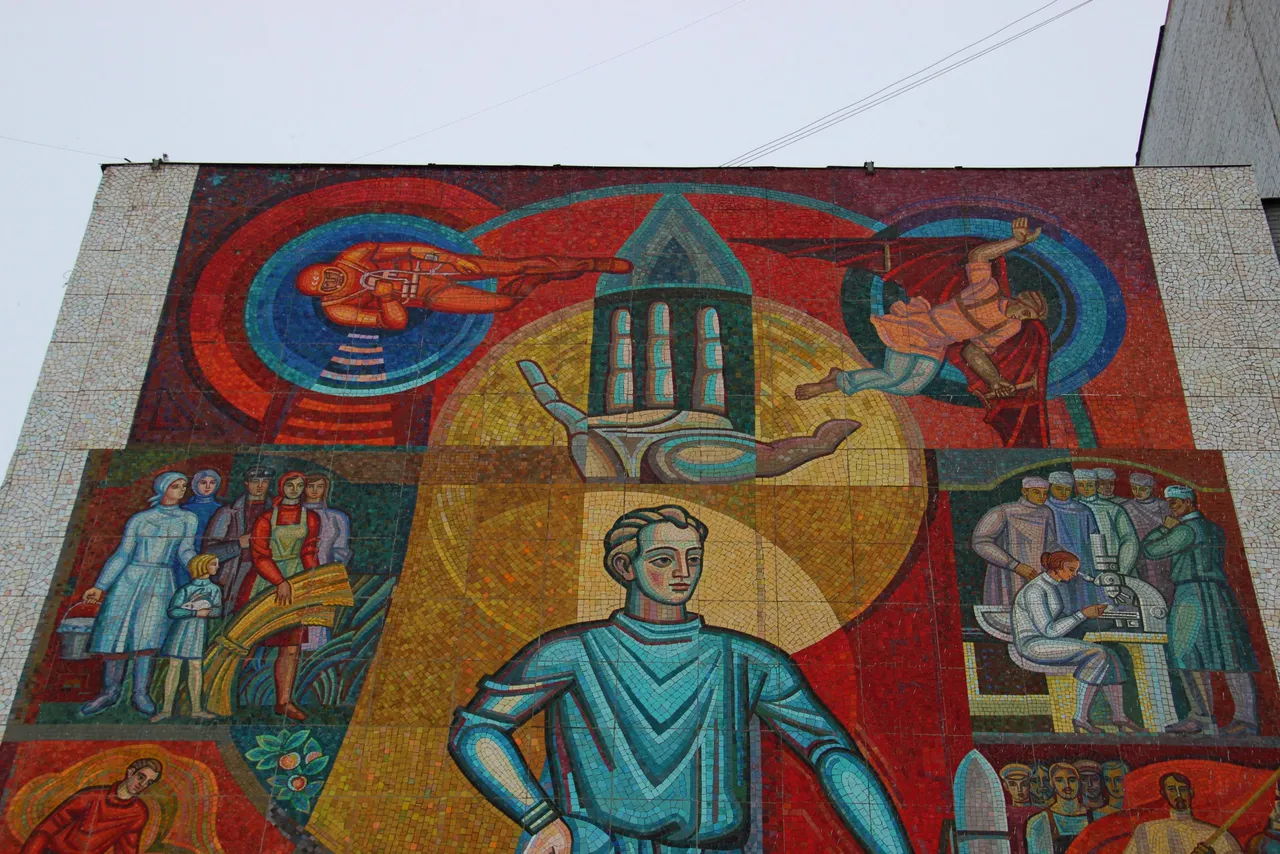
One of the methods of positioning the figures was this: the largest figure was located in the middle, it was framed by genre scenes. Soviet monumental panels did not give names and surnames, but showed only the images of the Worker, the Red Army man, the Scholar, and so on.
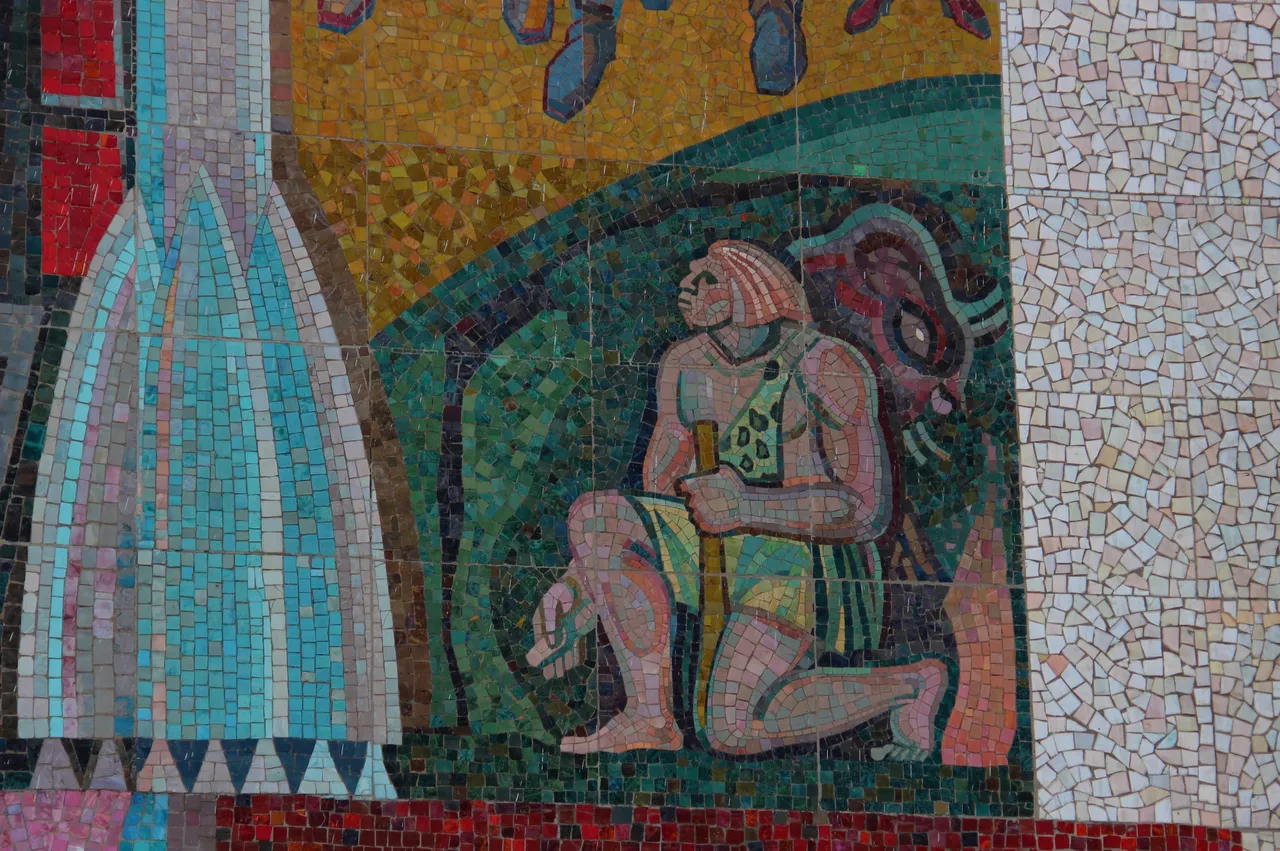
In addition to images of people, subject symbolism was distributed: tools, book, equipment, rocket, clouds, sun, airplane, chemical symbols, mathematical formulas.
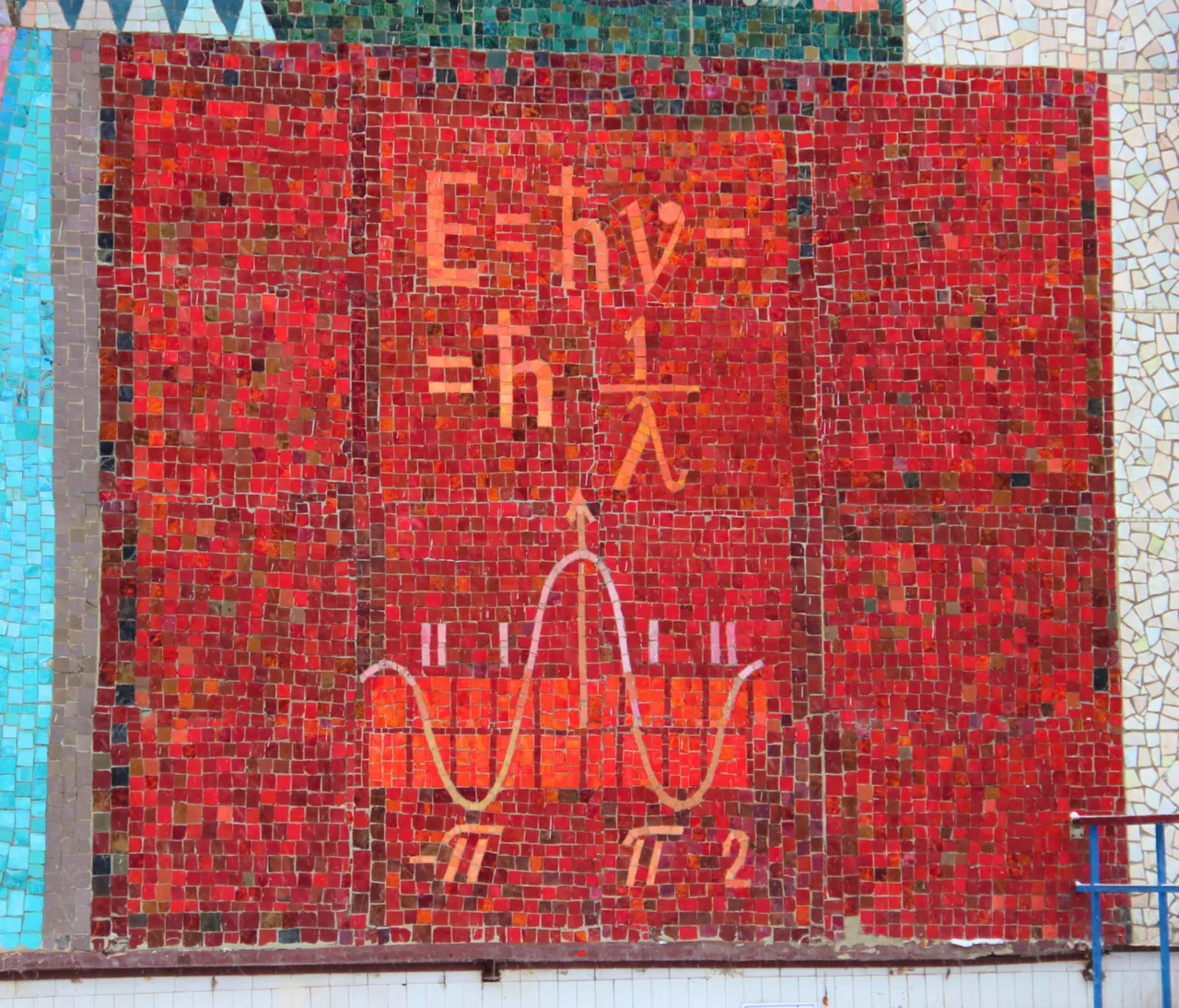
Most of the mosaics were created not by one pattern, but by unique sketches.
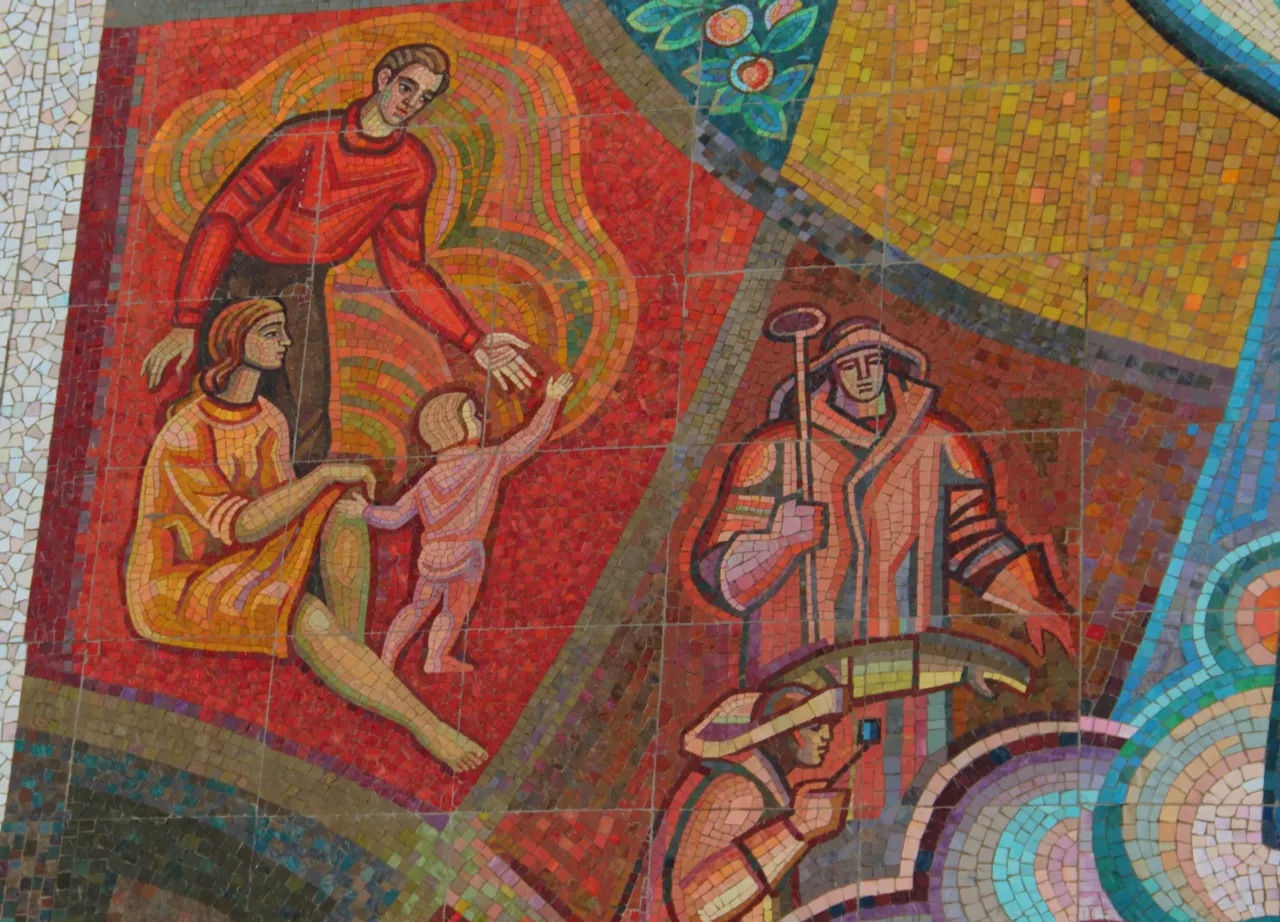
The Penza mosaic was discovered in 1974.
